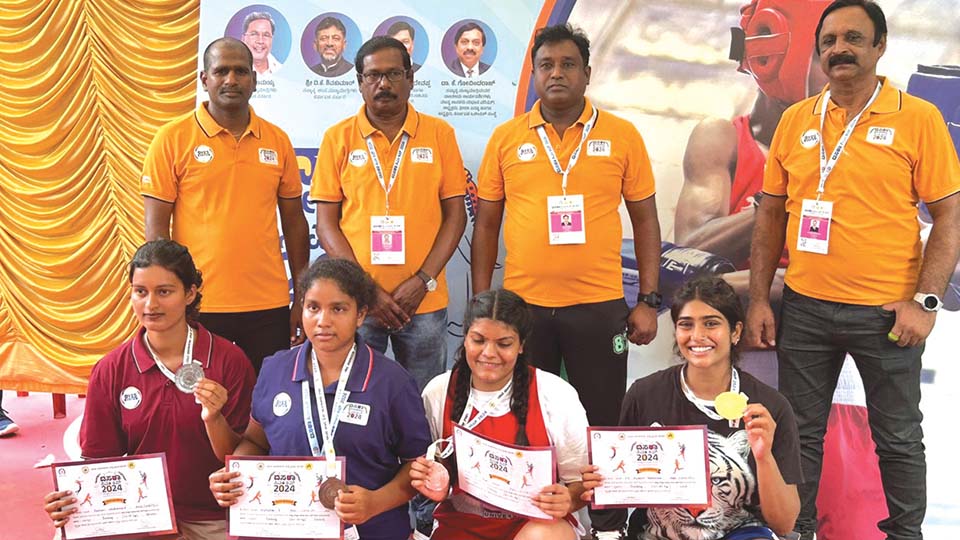Coorg Ruchi, in Rajarajeshwarinagar, is a treat for meat lovers
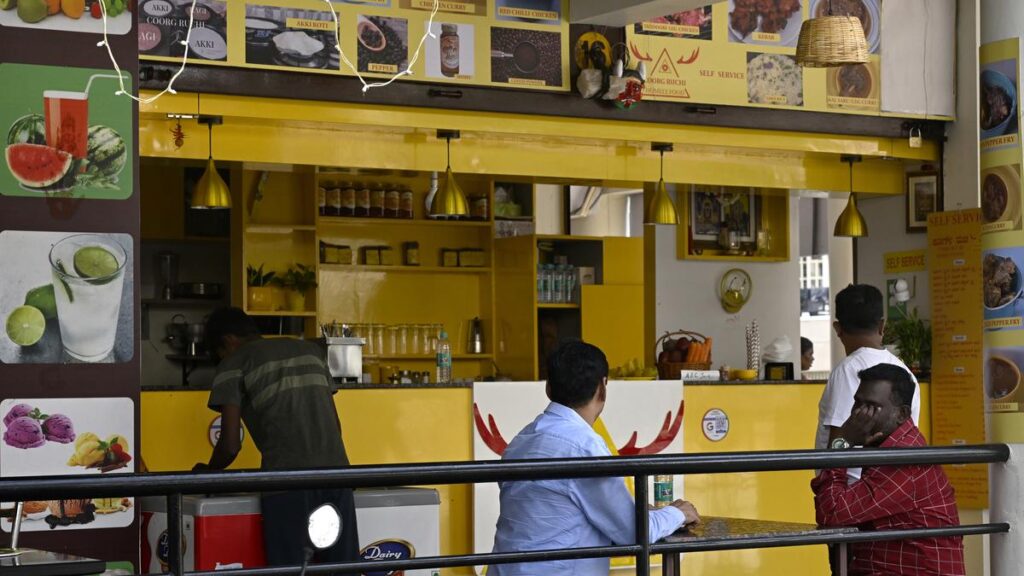
The cosy outdoor sitting area | Photo Credit: Bhagya Prakash K
There is no dearth of food joints in Rajarajeshwari Nagar. Enter the famed arch and the main road, leading all the way to BEML Layout, houses not just food joints that suit all kinds of palettes, but also all kinds of pockets.
So, what does a restauranter do to grab eyeballs amidst this tough competition? Sampath Kumar GP, who started Coorg Ruchi – Homely Food, housed in BDA Complex, has gone in for a vibrant yellow paint. The posters, his hotel’s logo and even the interiors are all designed and painted in a bright yellow hue that captures your attention, despite being housed in a building brimming with at least three restaurants in the same row.
The open kitchen too is painted a bright yellow and has pretty shelves that house honey, coffee and health drinks and spices — all sourced from Coorg and neatly stacked in rows.
Since the family hails from Coorg, Sampath from Gopalpur and his wife, Shilpa from Somwarpet, the name of the restaurant and the food they serve seem apt. What sets Coorg Ruchi apart from the many restaurants serving Coorgi cuisine is that they serve food with recipes that have been handed down by Shilpa’s grandmother and mother. “Everything is made from scratch, including the spices and the masalas.” “The logo is designed by our 12-year-old son Jeshta,” says Sampath.
Sampath sets out at 7am every dawn to buy meat (chicken, mutton and pork). While Sampath manages the online orders, sourcing the raw material and the billing, Shilpa takes charge of the kitchen. You can see her busy toggling between slapping the rottis on the kitchen counter, marinating the meat or tempering the gravies. We sit in the mini outdoor sitting area, which giving us a perfect view of the spic-and-span open kitchen. You can also turn 180 degrees and face the road, watching the traffic whizz past, while you dig into a juicy peppery chicken fry.
The menu offers limited dishes. “We are just a few months old, and since I cook everyday, we have kept the menu limited. Some of the spices are sourced from our estates and our friend’s estates in Coorg. “We also use cold-pressed coconut oil for cooking and personally buy grains and mill them to make flour. Nothing here is bought off the shelf or in plastic,” Shilpa says.
We start our meal with a plate of kebab, which has chicken covered with a red crisp crust, deep fried in oil. This is served with raw onion and a mint chutney. The kebab tastes as all kebabs do, with the exception of it not being too red in colour, due to absence of the food colouring, which is a consolation.
Though Shilpa offers us her signature drink mix with 32 ingredients, including dry fruits, millets, sprouts and almonds and the ABC (apple, beetroot and carrot) juice, our stomach seasoned as it is with adulterated and junk food craves brightly coloured carbonated drinks. Shilpa does not hide her disappointment at our choice saying, “I make the health drink with sprouted grain, seeds, almonds and millets. These are roasted and then milled so there is no adulteration.”
Next on the menu is Coorg style mutton pepper fry, mutton curry and ragi rotti. Though not a fan of red meat, this selection worked for us. The mutton pepper fry brimmed with the fire of pepper while the gravy flavoured with coconut and the traditional red chilli-poppy seeds mixture paired well with rice and ragi rotti. While the rottis were melt-in-the mouth, the sherwa that they served it with could have gone a little low on salt.
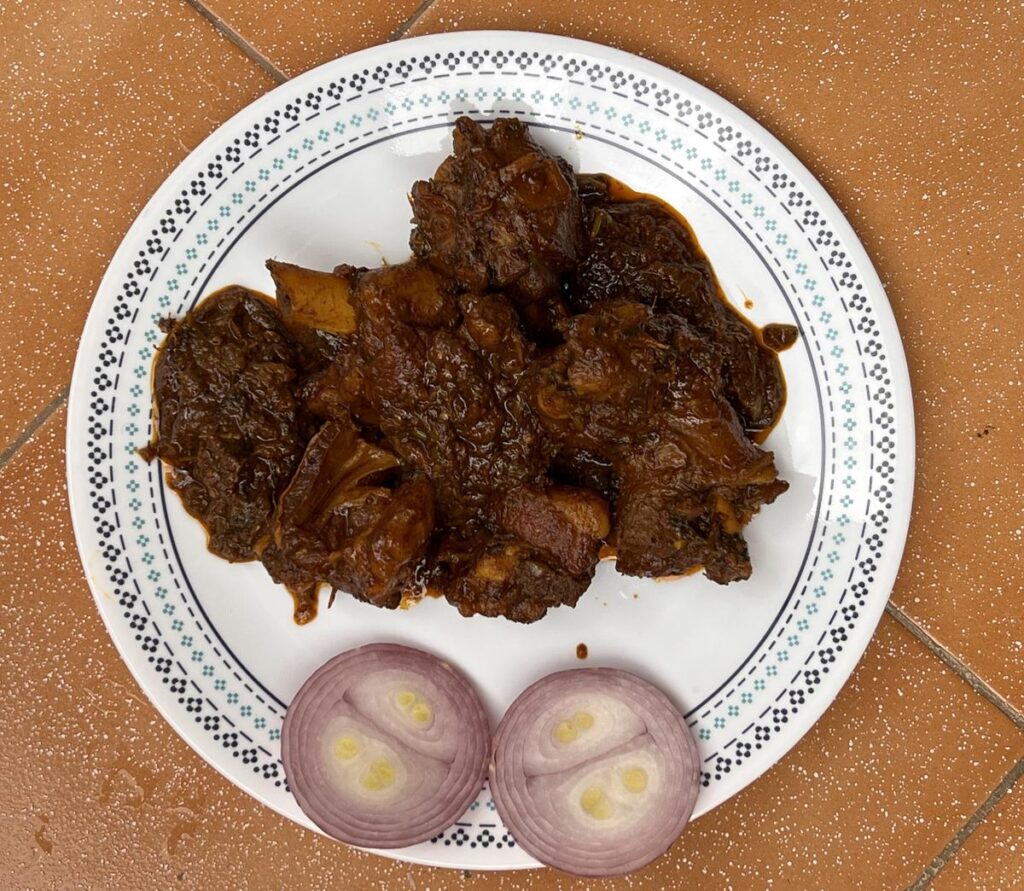
Mutton pepperfry
The rottis are made in the Coorgi style, without onions, coriander and dill leaves that we find in Bengaluru. These rottis are cooked like phulkas, without oil and are best eaten when piping hot as the rottis, made with rice and ragi do tend to go a wee bit hard when cold. The tandoor leg chicken is roasted to perfection. The ghee rice wins the maximum points as it is visually appealing with freshly cooked vegetables adding a pretty dash of colour — green, orange and white… and also flavour wise you can literally taste the ghee and every vegetable in the mildly spiced and salted rice. The rice gels with the chicken curry and chicken pepper fry, like it is meant to.
Shilpa recommends the mutton kaal saaru. “Normally kaal saaru uses the stock of the mutton leg. In Coorg, the stock is the main ingredient into which we add the spices and coconut paste to make a gravy.”
We take her advice and try the kaal saaru, dipping a piece of akki rotti into the saaru. The taste is way different from the regular kaal saaru one gets in Bengaluru, without the oiliness one normally associates with it. You also get the subtle taste of the coconut milk in this dish, with a gentle aroma of the coriander powder and the mild flavours of whole spices — cinnamon and cloves.
They have a separate kitchen at Coorg Ruchi specifically for pork dishes. “We kept it separate as not everyone eats pork and we did not want them to feel uncomfortable thinking that the meats were cooked in the same utensils,” Shilpa said.
We try the pork semi dry and chilli fry. The semi dry version is cooked again in pepper and the green masala, and the meat is cooked to perfection, but the chilli pork version smells of raw spices — a paste of ginger, garlic, onions, green chilli, and coriander seeds and leaves. It somehow feels raw and literally sets your insides on fire, which even our next carbonated drink, a chilled lemon flavoured one, is unable to put out. This dish was moved to the side as our throat recovered from the spice level and eyes from the tears as the after effect of the raw green chillies.
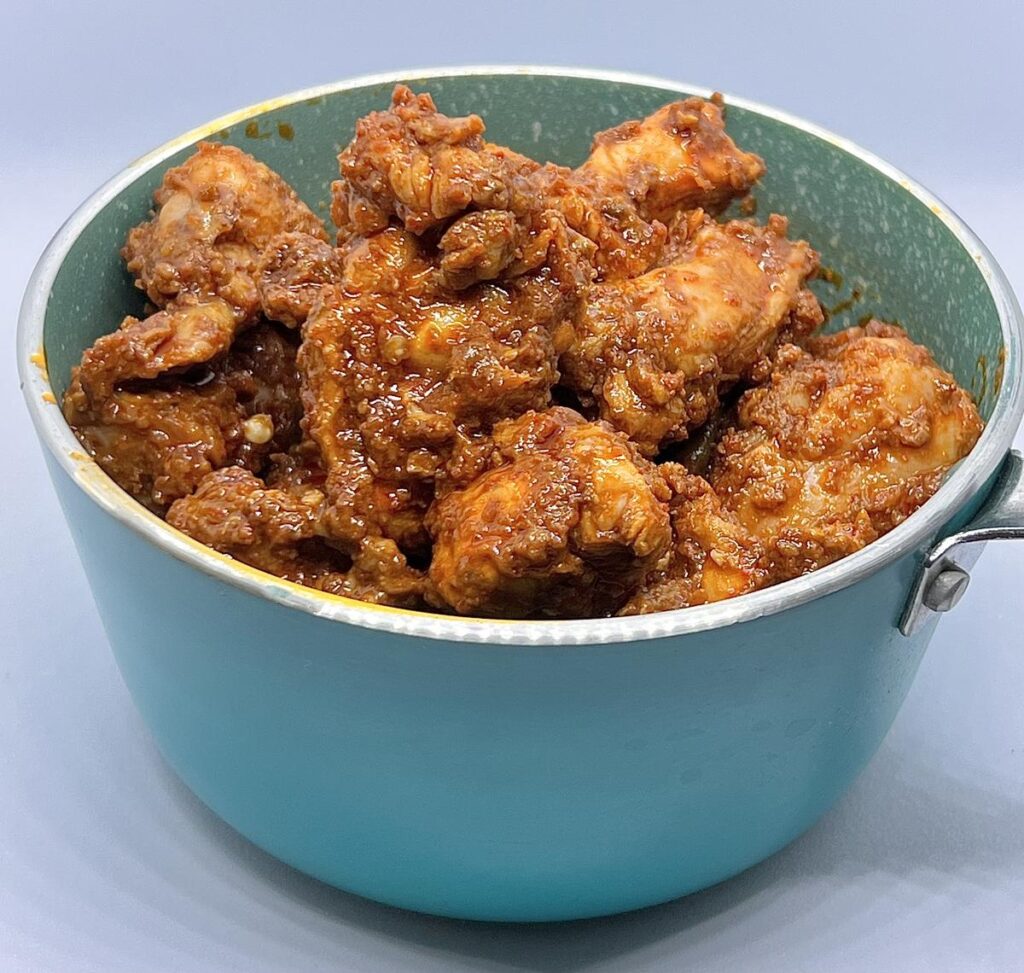
Chicken pepper fry
Coorg Ruchi has no vegetarian dishes to its menu as yet. However, if you are vegetarian, Sampath and Shilpa can serve whatever vegetarian food they have cooked for themselves for the day. “Eating meat thrice a day, gets a tad heavy, “ says Shilpa. “We cook a small portion of vegetarian food every day for our lunch or dinner. Normally, it is rasam, soppu saaru, soppu, palya andsprouts, which we share with customers who wish to have vegetarian food.”
For dessert we opt for a simple egg, milk and sugar pudding, and a huge bowl of vanilla ice cream and a good, old fashioned, choco-bar. Shilpa places a tall glass of ABC juice before us which we savour smiling with every sip as the flavours of the apple, beetroot and carrots hits the palate. Coorg also sells honey and filter coffee from the estate.
Cost for two ₹280. At RR Nagar. For more details , call 9448483200.
AddressShop #16, Ground Floor, BDA Complex, Halage Vadera Halli, Rajarajeshwarinagar
source: http://www.thehindu.com / The Hindu / Home> Food> Dining / by Shilpa Anandraj / August 25th, 2024
